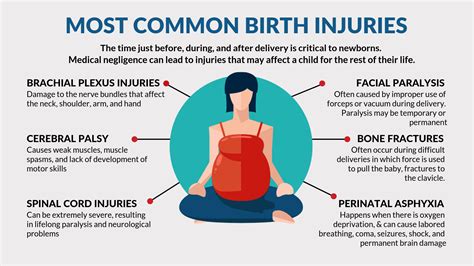
Birth injury lawsuits are legal claims filed by parents or guardians on behalf of a child who has suffered a birth injury due to medical negligence. These lawsuits seek compensation for the physical, emotional, and financial damages caused by the injury. Understanding the compensation process is crucial for those considering filing a birth injury lawsuit.
1. Evaluation of the Case
The first step in the compensation process is the evaluation of the case. This involves gathering medical records, consulting with medical experts, and reviewing the circumstances surrounding the birth injury. The strength of the case will determine the likelihood of receiving compensation.
2. Filing the Lawsuit
Once the case has been evaluated and deemed strong enough, the next step is filing the lawsuit. This involves drafting a complaint that outlines the allegations of medical negligence and the damages suffered as a result. The complaint is then filed with the appropriate court.
3. Discovery Phase
After the lawsuit has been filed, both parties engage in the discovery phase. This is the process of exchanging relevant information and evidence related to the case. It may involve depositions, interrogatories, and requests for documents or records.
4. Negotiation and Settlement
During the discovery phase, the parties may engage in negotiations to reach a settlement. Settlement negotiations can occur at any time during the lawsuit, but they are most common after the discovery phase when both parties have a better understanding of the strengths and weaknesses of the case.
5. Trial
If a settlement cannot be reached, the case will proceed to trial. During the trial, both parties present their arguments and evidence to a judge or jury. The judge or jury then determines whether the defendant is liable for the birth injury and, if so, the amount of compensation that should be awarded.
6. Appeal
If either party is dissatisfied with the outcome of the trial, they have the right to appeal the decision. The appeals process involves presenting legal arguments to a higher court, which reviews the trial court’s decision for errors of law or procedure. If the higher court finds in favor of the appealing party, a new trial may be ordered.
7. Enforcement of the Judgment
If the plaintiff is awarded compensation either through a settlement or trial, the final step is the enforcement of the judgment. This involves collecting the awarded amount from the defendant. If the defendant fails to pay, the plaintiff may take legal action to enforce the judgment, such as garnishing wages or placing liens on property.
Frequently Asked Questions
- Q: How long does the compensation process in birth injury lawsuits usually take?
- A: The duration of the compensation process can vary depending on various factors such as the complexity of the case, court schedules, and negotiations. It can take several months to several years to reach a resolution.
- Q: What types of damages can be claimed in a birth injury lawsuit?
- A: Damages that can be claimed in a birth injury lawsuit include medical expenses, future medical care, physical and emotional pain and suffering, loss of earning capacity, and other related costs.
- Q: Can I file a birth injury lawsuit if the injury occurred many years ago?
- A: The statute of limitations for birth injury lawsuits varies by jurisdiction. It is best to consult with a birth injury attorney to determine if you still have time to file a claim.
Conclusion
The compensation process in birth injury lawsuits involves evaluating the case, filing the lawsuit, engaging in the discovery phase, negotiating a settlement, going to trial if necessary, and enforcing the judgment. It is important to consult with a birth injury attorney to navigate this complex process and seek the compensation your child deserves.